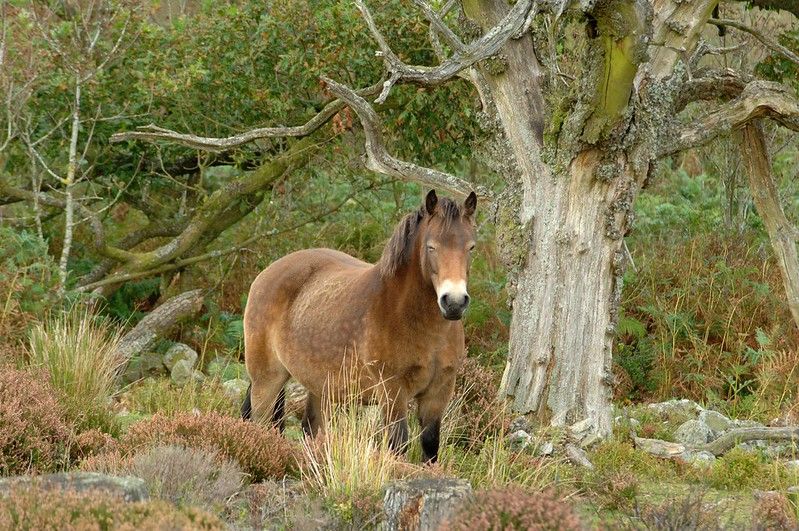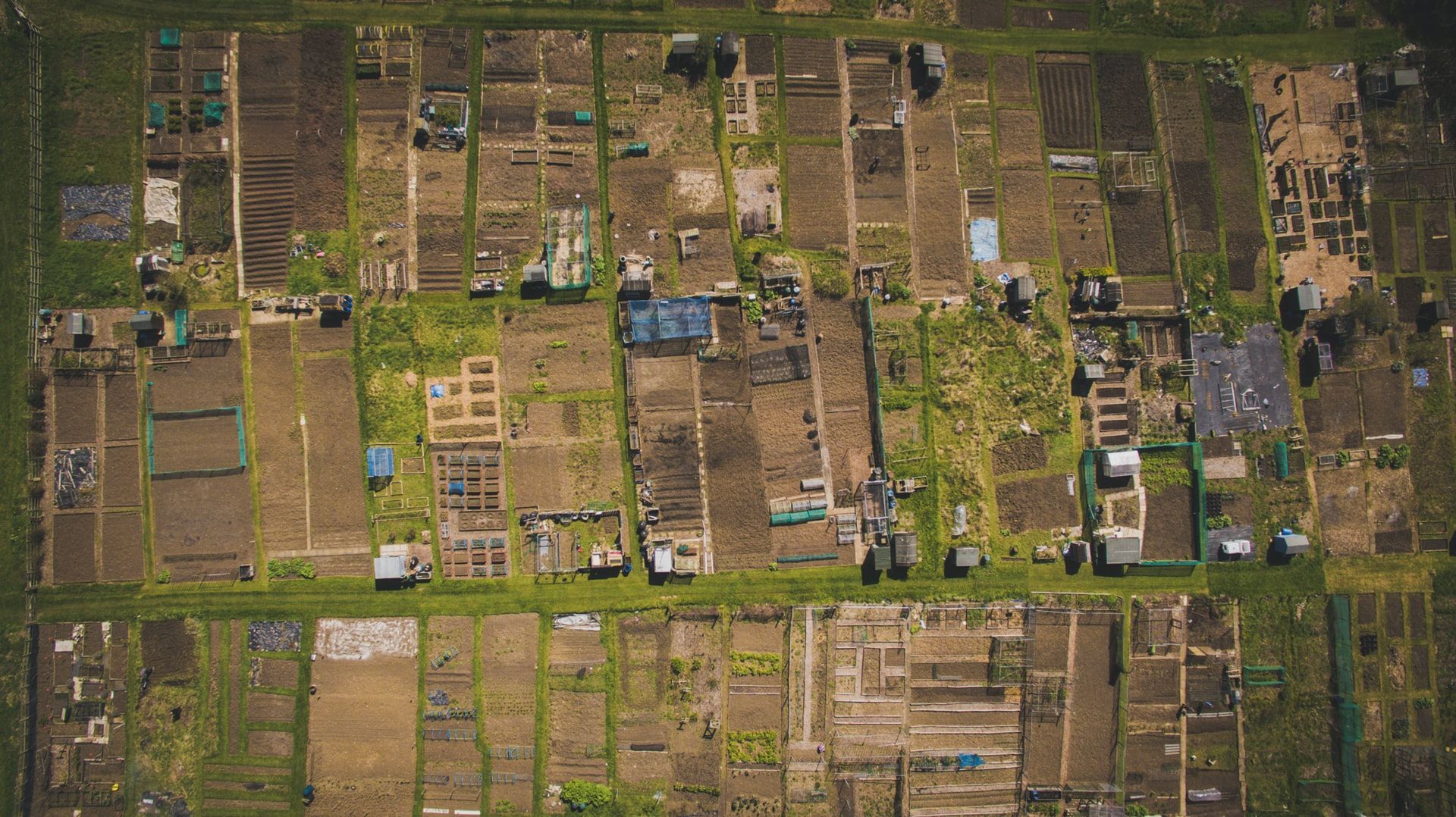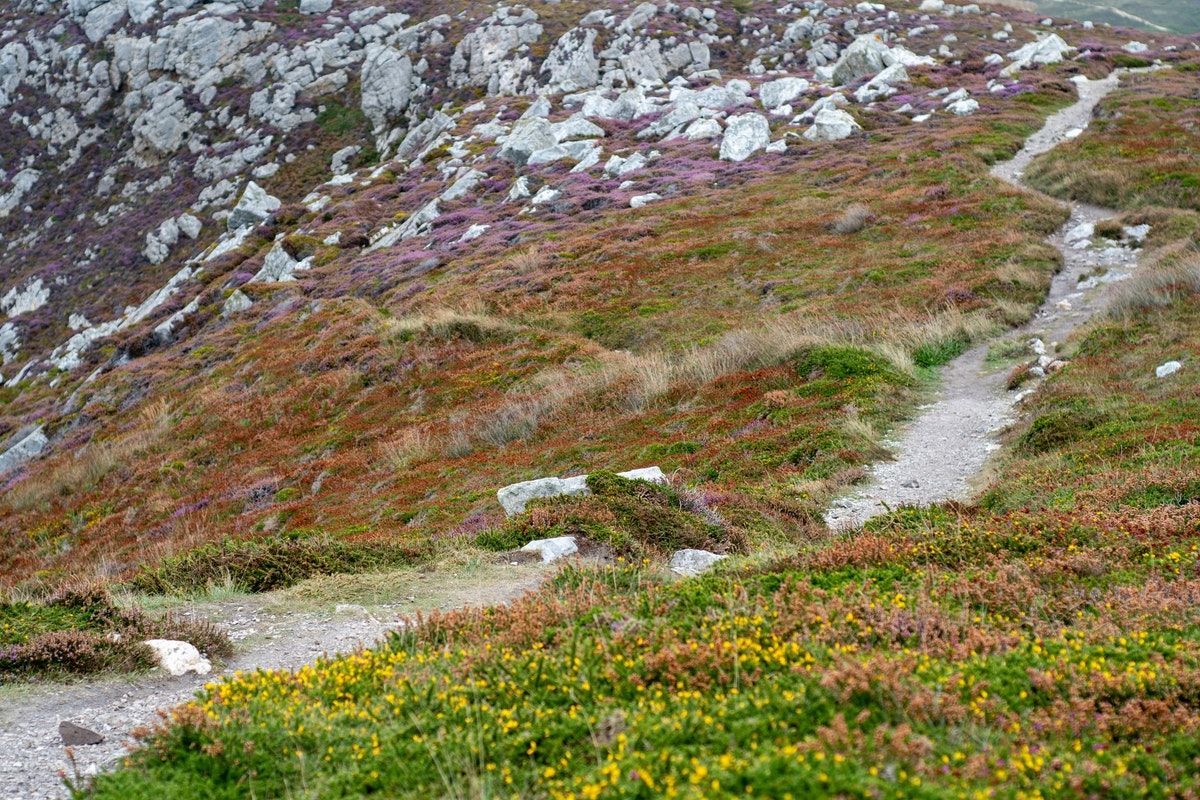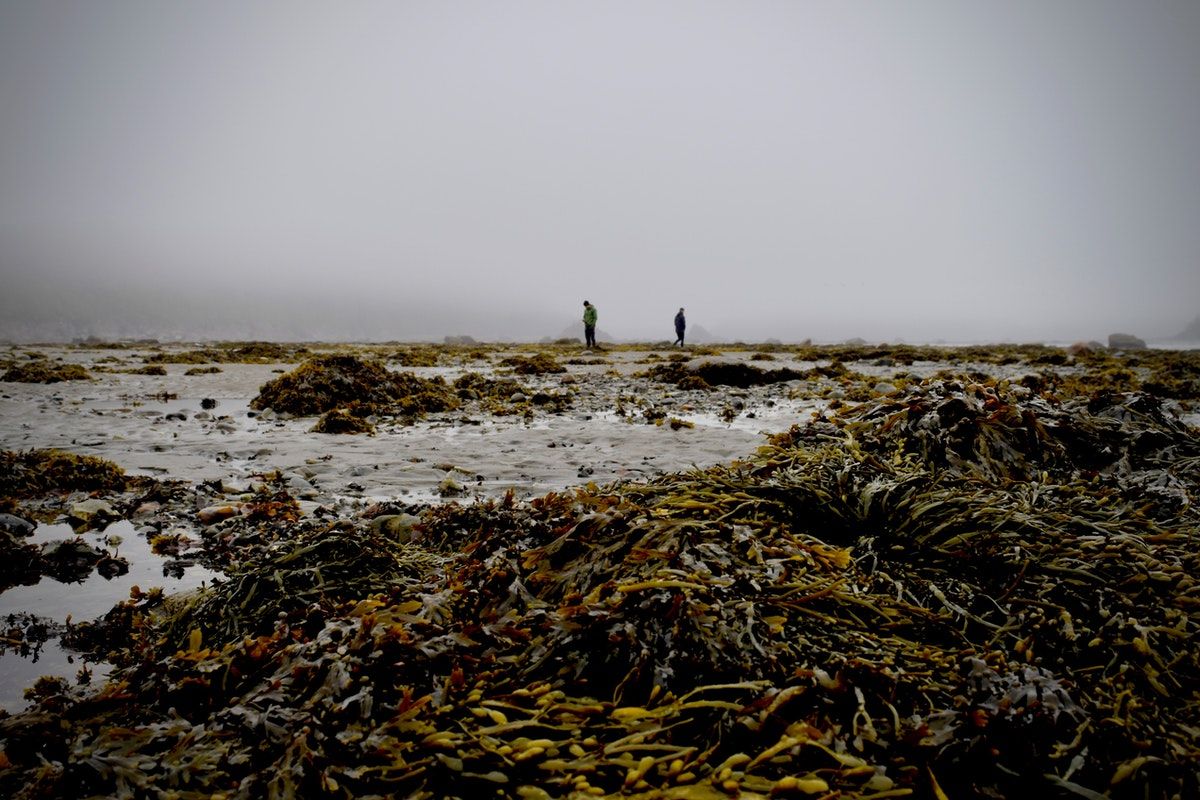
Green Brexit & Gaelic Landscapes
The latest news on nature and conservation in the UK.
National news
Brexit | The government has failed to deliver a “Green Brexit”, according to a coalition of environmental groups that have been tracking changes in policies since the UK left the EU. The final edition of a Brexit risk tracker, maintained by Greener UK, concluded that protections for climate, farming, fisheries and water quality are similar to those pre-Brexit, while protections regarding chemicals, nature, air quality and waste are now weaker than they were before. The conclusions are explained further in this blog from the Wildlife Trusts. Craig Bennett, head of the Wildlife Trusts, has written about the disappointing outcome in the Independent. The BBC covered the news.
Colonialism | Kew Gardens has announced that it will re-word the display boards for certain plants to highlight their connections to colonialism and the slave trade, in an effort to decolonise their botanical collections. “We’re clearly in part borne from the imperial period, from the imperial legacy. I recognise there is a lot to do,” said Richard Deverell, the head of the gardens, in the Evening Standard; he explains his thinking further in an interview with the Guardian. The plans were outlined in Kew’s ten-year strategy; the background to this decision is described in a blog. There was some predictable backlash but, in the Spectator, Isabel Hardman hit back at Kew’s critics: “Why wouldn’t you want to know about the origins of the flavour of your ice cream, or of the plant scrambling up a pillar in a glasshouse in South West London?” she writes. “The only answer to that question is that you are incurious to the point of being dull.”
Wildcats | It’s been a big week for a little wildcat called Nell, who has arrived at a newly constructed enclosure at the Highland Wildlife Park at Kincraig in Scotland. Over time, she will be joined by another 15 wildcats, and it is hoped that their kittens will subsequently be released into the wild, in an attempt to restore the critically endangered species. The cats are being sourced from various locations, and are being selected for their genetic diversity and other characteristics to give the next generation the best possible chance in the wild. The story was covered by the Scotsman and the BBC.
In other news:
- The government has announced a new £2.7 million fund for local authorities to increase tree cover outside woodlands.
- I’m a Celebrity… used invasive crayfish species without a licence, reports Countryfile.
- The Welsh government is creating two woodlands in memory of those who have died from coronavirus, reports Wales Online.
- Shaun the Sheep will ‘plant’ the National Forest’s nine millionth tree, reports the BBC.
- The government is considering a ban on hare shooting, reports the Telegraph.
Across the country
Oxford | Transport secretary Grant Shapps has cancelled the OxCam Expressway, following analysis showing that the road would not be cost-effective. Environmental NGOs had been fiercely opposed to the development, which was part of a wider development scheme in the Oxford-Cambridge Arc, and were engaged in a legal battle in the High Court with the government over its plans. The Oxford Mail covered the story.
Cornwall | A hotel in Cornwall has found itself in hot water after removing trees to build three pods providing nine meeting rooms. The Carbis Bay Hotel is hosting the G7 Summit later this year. Cornwall Council has called on the hotel to halt these “unauthorised” works, given that planning permission had yet to be granted, reports Cornwall Live. The hotel claims to be “one of the UK's best and greenest destinations". In a statement, the hotel said that the woodland was not ancient, but rather a small self-seeded scrubland, and that there were no badger setts onsite. The BBC, ITV and the Times covered the story.
Suffolk | The Somerleyton Estate in Suffolk has released four water buffalo, 16 highland cows, 16 Exmoor ponies and 12 pigs onto 1,000 acres of land as part of its new rewilding project, reports the Eastern Daily Press. “We know that given time this land will end up with gorse, birch, heather, native grasses and wildflowers, then eventually successional oak will come through,” said the landowner Hugh Somerleyton. In the long-term, there are plans to introduce European bison onto the site. On a smaller scale, East Suffolk Council has decided to leave sections of council-owned cemeteries to become “wild spaces” to boost biodiversity in the area, reports the Lowestoft Journal. And the Suffolk Wildlife Trust is consulting on the idea of reintroducing ospreys to the county for the first time in more than a century, reports the East Anglian Daily Times.

Elsewhere:
- Natural Resources Wales has issued a licence to release beavers into a secure enclosure near Machynlleth.
- Citizen Zoo is launching a rewilding project in South London, reports BirdGuides.
- The Yorkshire Post has a feature on how willow tits have found refuge in the county’s old collieries.
- A gamekeeper used a live owl decoy to attract and shoot buzzards on a North Yorkshire grouse moor, reports BirdGuides; while another hen harrier has disappeared in suspicious circumstances, according to the RSPB.
- The Fens Biosphere is applying to UNESCO to give the landscape protected status, reports the Eastern Daily Press.
- The RSPB’s Blacktoft Sands reserve is being expanded following the purchase of nearby farmland, reports BirdGuides.
Reports
Scotland | A new report for NatureScot, by Scottish broadcaster Ruairidh MacIlleathain, explores the folklore, poetry and language describing the Scottish landscape, and looks at how these historic records could inform nature restoration today. This is a fascinating read for anyone who is at all interested in the overlap between nature and culture. A coalition of NGOs – New Economics Foundation, Common Weal and Revive – also released a report concerning Scotland this week, providing a vision for land reform; this is a subject with enormous relevance to the future of the landscape, and the report looks explicitly at agricultural subsidies and deer and red grouse management.
Health | A new report from the Royal College of Psychiatrists and the Royal College of Occupational Therapists promotes social prescribing to combat the mental health consequences brought on by the pandemic. Nature is one of the various interventions that it suggests: “If outdoor and nature-based activities are available in a local area, social prescribing can be a way for individuals to spend more time in nature as a way of managing their mental health condition,” the report says. It points out that many people stand to miss out on these benefits, as social prescribing services are not equally distributed across the country.
Habitats | A report by Cambridge Econometrics, commissioned by the RSPB, examines the economic benefits of nature-based solutions to climate change, focusing in particular on salt marshes, peatlands and woodlands. For instance, it finds that every £1 invested in peatland restoration yields £4.62 in economic and social benefits, while contributing to improved water quality, reduced flood risk and enhanced biodiversity. The study was covered by the Telegraph.
Science
Allotments | A study published in Sustainability looks at the resources required to produce food from an allotment in the UK. Using year-long “allotment diaries” by growers across the country, researchers discovered that the average allotment requires 87 visits per year, with seven fertiliser applications and four pest control applications. Each kilogram of food produced required about 25 minutes of labour, 0.2 litres of topsoil and 1.9 litres of compost. As urban horticulture grows in popularity, the researches suggest minimising these inputs through the diversion of municipal compostable waste and household-level city food waste.

Bats | A study in Acta Chiropterologica examines the foraging habitats of bats. Researchers from across the UK identified habitat selection by barbastelle bats, and then looked for signs of prey within their poo. They found that the bats prefered to forage within riparian vegetation, broadleaved woodland and hedgerows, where they would munch on 120 different prey items, 98 percent of which were moths. With bat populations declining, the researchers recommend managing these key habitats to improve their foraging value.
Trawling | A study in Nature finds that increasing ocean protection could have triple benefits, by protecting biodiversity, boosting the yields of fisheries, and securing marine carbon stocks at risk from human activities. It is the first study to quantify the emissions from bottom trawling globally, finding that it has a similar impact to global aviation. The UK is among the nations with the highest emissions from bottom trawling, writes the Guardian. Environment minister Zac Goldsmith called the paper “an important contribution to the science on ocean protection”.
Driftwood
Women | The awful murder of Sarah Everard, and the subsequent outpouring of stories from women, has led people to consider anew the safety of women on nature reserves. This article by Lucy McRobert in BirdGuides is particularly good, and includes practical advice on how to make birding a safe and enjoyable hobby for everyone. The RSPB’s Martin Harper has also shared his thoughts on how to be a “good man”.
Meadows | The immaculately striped lawns of manor houses and Oxbridge colleges are becoming an “endangered species”, quips Patrick Barkham in the Guardian. Increasingly, people are allowing wildflowers to flourish in their once neat and tidy lawns, as the aesthetics and morality of perfect lawns are being increasingly challenged; last year, even the lawn at King’s College in Cambridge was transformed into a meadow. The Telegraph has an article on another once-totemic feature of the landscape: the English elm, which has been ravaged by Dutch elm disease. It examines some of the options for disease-resistant varieties of related species, and some of the ambitious elm-planting experiments that have taken place across the country.
Peat | The Moorland Association, a group for moorland owners, has surveyed its members and found that, over the last decade, they have restored around 3,200 hectares of bare peat and planted 1,275 hectares of trees. This conservation work means that 61,000 tonnes of carbon dioxide is being removed from the atmosphere each year. To put these numbers in context, the Moorland Association’s members own around 350,000 hectares of heather moorland, of which 200,000 acres are deep peat. Dr Tim Thom, peatland programme manager at Yorkshire Wildlife Trust, said it was “great to see moor owners rising to the challenge of climate change”, according to the Yorkshire Post, which covered the survey.
Further reading:
- The Independent has some ideas on how to “rewild” your children. I don’t think it involves any apex predators.
- Natural England has a blog on its new SSSI at Swanscombe, the site marked out for a theme park development.
- The RSPB’s Martin Harper has published his latest analysis of the UK’s agricultural policies, this time focusing on England.
- EcoHustler has a feature on the environmental impacts of the salmon farming industry.
Happy days
Mushrooms | Apparently, growing your own mushrooms is the hot new lockdown hobby. The Guardian explores this latest trend – and it’s definitely worth checking out the article just for the photos of the stunning fungi that people have created. This trend had passed me by till now, but if you’ve been mushroom-growing, I want to know! Tweet me pictures of your produce.
Image credits: carina m, Natural England, Dan Rozier
Subscribe to our newsletter
Members receive our premium weekly digest of nature news from across Britain.
Comments
Sign in or become a Inkcap Journal member to join the conversation.
Just enter your email below to get a log in link.








